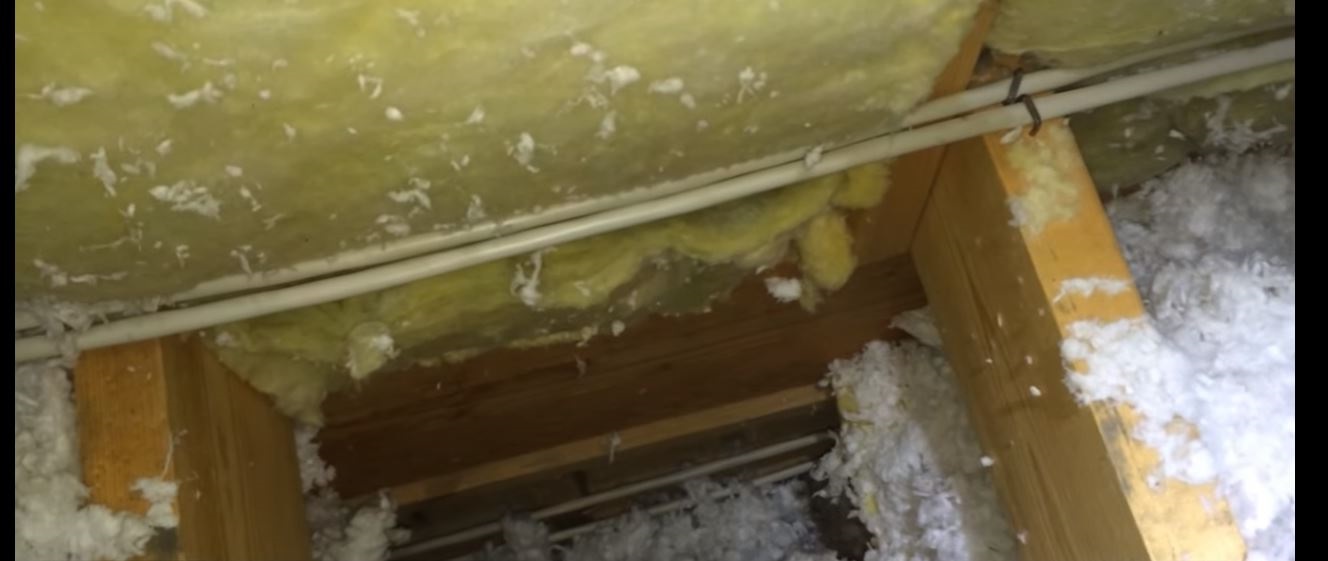Help! I Have a Noise In My Attic! (But NO droppings to identify!)
Without any animal droppings, or feces, to observe, you must use your other senses to try to determine the best option among the most commonly found wild animals in attics (and walls and basements, too!).

There are many qualities of sounds and movements, as well as other observations that you can easily identify when you take the time to really listen well. For instance, are the sounds heard?
• Morning, afternoon, or the dead of night? Or any/all of the above
• Throughout the whole attic, several areas, or only one specific spot
• In the walls, basement, or just the attic?
• Quiet and light, or loud and heavy?
• Fast or slow movements?
There are several main culprits, among which squirrels, raccoons, rats are and mice, opossums. Each will be elaborated below. Bats and snakes will also come in, but they are discussed elsewhere.
SQUIRRELS
One of the very most common culprits is the squirrel, namely a mother squirrel. She will either be looking for a place or building a nest for one of her two yearly litters, or she will be rearing one of those litters and have a number of little ones running around with her. Squirrels are well-known to be chewers. They chew the wood of a house to get in, and then chew more once they are inside. If you are hearing running around in the morning or late afternoon, or just about any time of day, it is most likely a squirrel. While they can be heard running around all across the attic, tunneling through the insulation, they are most comfortable hunkered down in their nests near the entry into the attic.
RACCOONS
Raccoons are another very common culprit when it comes to attic noises. They are, however, much larger and heavier than squirrels, and so do not scamper around lightly. They are usually heard walking heavily, soon after sunset or right before sunrise, although they may sometimes be heard throughout the day. Raccoons and their babies also are very vocal with each other, and a characteristic chattering is often heard, along with growling at times. The mother raccoons, looking for a place to have their babies in late March and April, have what seems to be no conscience when it comes to breaking into a warm, dry place such as your attic. They have been known to rip screens and shingles, tear out ductwork, and pull off poorly installed vents. They keep their babies with them for about eight or so months, then return to your attic for the next litter, unless they are sealed out.
MICE AND RATS
Mice and rats are THE most common culprit for attic noises (and inside walls, too). The ubiquitous rodents are a menace to a home all hours of the day, all days of the week, and all year long. They breed constantly and can multiply at rates beyond the imagination, quickly overrunning your attic, if not stopped in their tracks. They are what is termed “commensal,” meaning that they are associated with people, rather than the wild. Not surprisingly then, the rodents are more commonly found in cities than in the country settings often attributed to them. They usually sound like light, fast, and scurrying little creatures, but if your acoustics are just right, they can sound like elephants!
Rats and mice can crawl in very, very small crevices, holes, and cracks. They can climb up to the roof and enter through the vents or stacks, chew through the soffit and fascia, or squeeze through a tiny cable-cord hole in the foundation. Basically, they can get to wherever they want to, and without much trouble. They leave behind a tremendous amount of feces that look like little grains of brown rice, and will tunnel through your insulation, leaving brown smudges from their greasy fur. They are well-known to carry disease, as well, so it is wise to eradicate them as soon as you find evidence of them.
OPOSSUM
It is unlikely that an opossum is in an attic that does not show evidence of any droppings. Opossums leave behind very large feces—and LOTS of them! They will tunnel through the insulation, leaving very large trails, but not a whole lot of noise. You will hear, if you hear them at all, a large, lumbering, shuffling animal making its way around in circles. They are usually singular, and only “den up” during the coldest months of the year. The mothers, looking for a safe, warm, and dry place to have their young, will climb up your house in May and June, often finding an existing hole in the soffit or an eave gap. Keeping in mind that they are relatively large animals, they need to find a larger hole than most critters, and don’t often force their way inside.
Read the Pest Wildlife Home Page page for helpful information and to learn more about Help! I Have a Noise In My Attic! (But NO droppings to identify!)
Help! I Have a Noise In My Attic! (But NO droppings to identify!)

